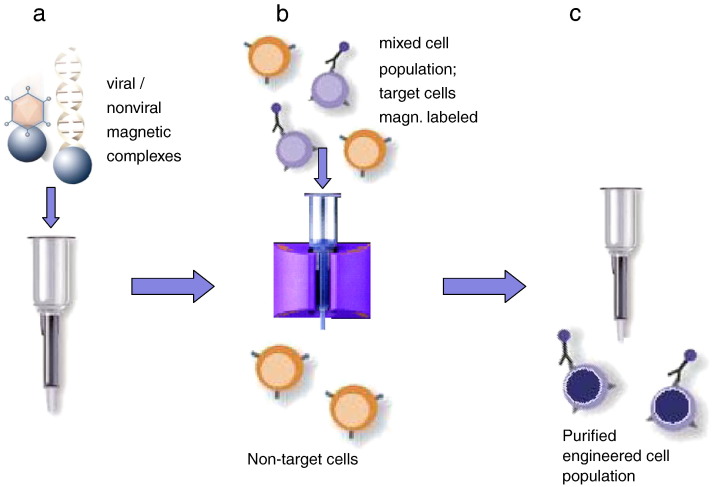Fig. 14.
Schematic representation of the magselectofection procedure. (a) A vector, viral or nonviral, is associated with magnetic nanoparticles. In this manner, one can immobilize the vector on magnetic cell separation devices such as shown here on a magnetic cell separation column from Miltenyi Biotec. (b) Magnetic particles binding specifically to target cells by virtue of affinity ligands bound to the particle surface are used to magnetically label target cells. The cells are then loaded to the vector-modified cell separation device while it is exposed to a magnetic field and are thus retained. Non-target cells are not retained and are flushed from the device. During this procedure, the target cells bind the magnetically retained vector. (c) Finally, the cell separation device is removed from the magnetic field, the selected cells are flushed from the device and (d) cultivated until further use. This general scheme was implemented on MACS® cell separation devices (Miltenyi Biotec) and lead to rapid, efficient and target cell-specific gene delivery.
This research was originally published in Blood. Sanchez-Antequera et al. Magselectofection: an integrated method of nanomagnetic separation and genetic modification of target cells. Blood. 2011;117:e171-e181. © the American Society of Hematology. Reproduced with permission from the American Society of Hematology: Blood [83].

